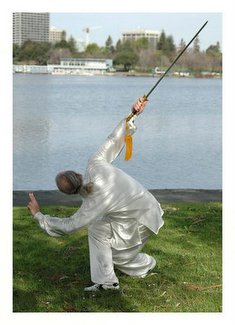‘From ghoulies and ghosties
And long-leggedy beasties
And things that go bump in the night,
Good Lord, deliver us!’
- Old Scottish Prayer
I find this old, old rhyme very startling in its implications. Because it says ever so much, if one reads between the lines.
It’s all about fear.
Do you recall that very first moment, laying in bed, in the dark, and seeing the curtains morph into some tentacled nightmare? Or perhaps it was your jacket, laid across a chair, which began to take some unfathomable shape, beyond its proper dimension.
Let’s add another word.
It’s all about night fears.
Fear in and of itself is hard-wired into our nervous systems. It beats arrhythmically in our hearts, a pounding tattoo in our veins, whether it’s a near miss in traffic, the hoarse incoherency of confrontation with one of the walking wounded, the loss of a loved one, the sudden sound in the dark when walking to the car.
We do need the fear. It teaches us not to grab the knife as it falls, to touch the bright redness of a burner, to calculate whether or not to run a red light, to pull the hand back from chomping machinery.
Fear. Such a monosyllabic word; so rife with ramification.
As a species, we lack most of the necessary components to be true predators. No fangs to rip, no claws to rend with. But we are granted by evolution that most valuable tool: the mind.
The mind requires structure. It requires virtues too numerous to list here. But with the birth of identity, comes the need to identify.
Some ancient cultures maintain, in their rituals and rites, that to name a thing is to have power over it. Why? Identity requires it. Structure requires it.
Examine any ancient (or semi-modern, or even modern) culture, and you will encounter a huge divergence of ‘ghoulies and ghosties and long-leggedy beasties’, from the Celtic to the Asian, everywhere you go.
It boils down to putting faces and names to the sounds outside the campfire. Dating back to a time when every moment, waking or otherwise, was a grim battle for survival, where death was but a heartbeat away, and no more. It perhaps dates back even to when our ancestors fled the gaping, jagged teeth of the Devonian shark.
But first we name the thing. It brings us closer to understanding it. Then we measure by observation.
Of course, when lighting the torch, or flicking on the light, it vanishes. So we begin to ascribe attributes unobservable to this fleeing creature that defies pigeonholing. The imagination runs rampant, and sometimes, the fear overwhelms, and what was once a curtain moving in the draft takes on every possible aspect of that which we dread, and the rhythm begins, the tattoo pounds.
And somewhere, somehow, some resourceful Alpha wolf measured the impact, on himself or another, and the AW became the shaman, the priest, or the village witch doctor. Offering protection from the fear. Proffering a shield against the unknown, the sounds beyond the campfire.
Thus, religion was born.
But when the herd outgrew the fantasy, another had to be invented. Or reinvented. It evolved, for wont of a better word.
Thusly, were ‘ghoulies and ghosties and long-leggedy beasties’ also born. In response, a number of mythic creatures benign were also born, for it is observable, that most things have a counterpart, or, to paraphrase Heraclitus, life is a dynamic interplay between polar opposites.
Yes, we should live with some sense of wonder. The unique nature of our world precludes otherwise.
But there are limits. There needs be some boundaries defined: otherwise, fantasy becomes illness.
And yes, there are ‘ghoulies and ghosties and long-leggedy beasties. There are predators.
They are human, is all.
‘What a tangled web we weave, when first we practice to deceive’, as the old bard Bill once said.












